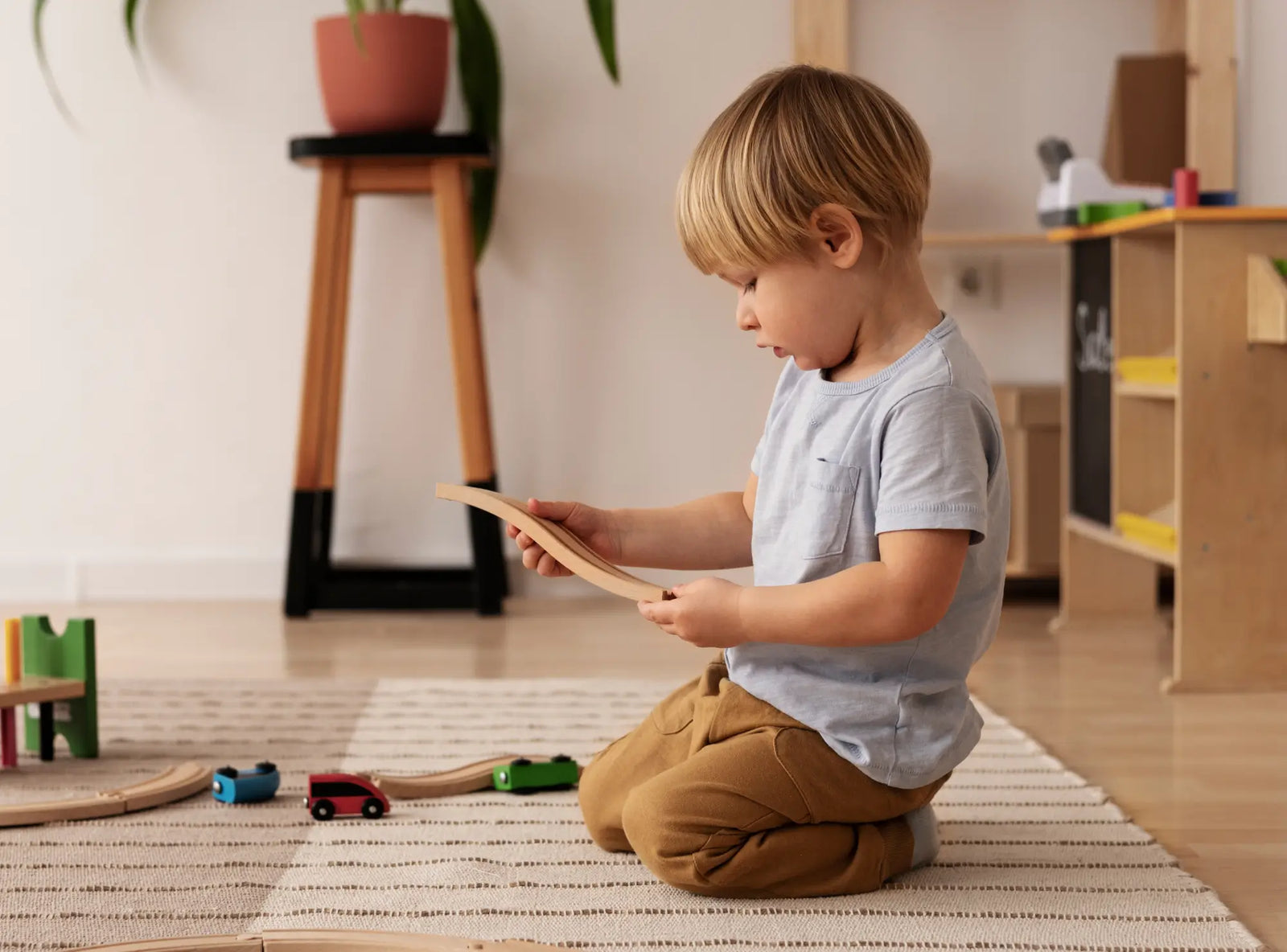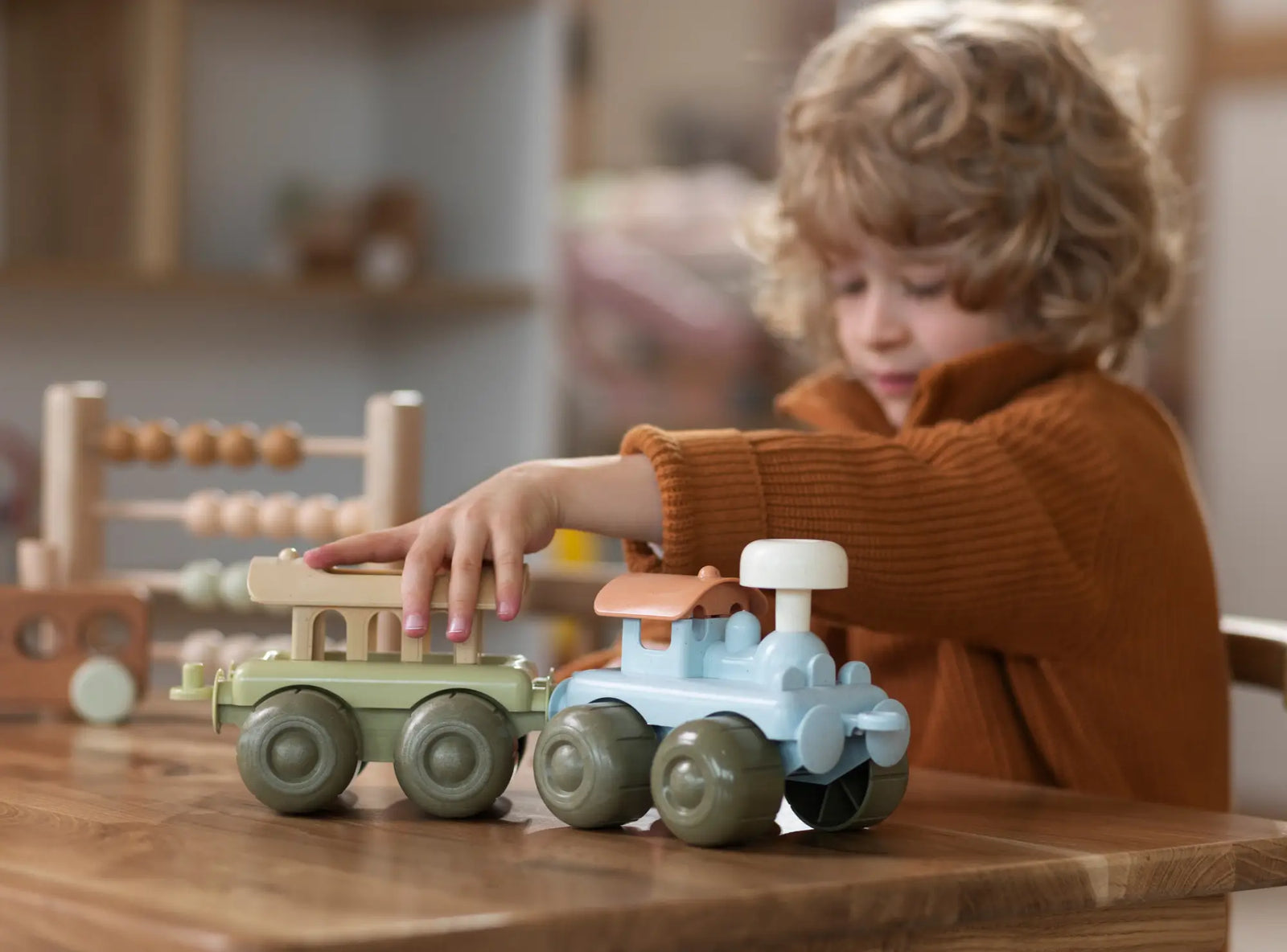Baby
dot
Kids
dot
Toy
In a world filled with high-tech gadgets and flashing lights, it’s easy to overlook the value of simple, open-ended toys. However, these basic toys are often the most powerful tools for a child’s development. Open-ended play, which is play that allows children to use their imagination and creativity without predefined rules or outcomes, is essential for fostering a wide range of skills. Here’s why simple toys are the best choice for promoting open-ended play and why they hold such significant benefits for children.
1. Stimulates Creativity and Imagination
Open-ended toys, like building blocks, dolls, and art supplies, provide endless possibilities for creative expression. Unlike toys with a single purpose or a specific set of instructions, these simple toys can be transformed into anything a child imagines. A set of wooden blocks can become a castle, a spaceship, or a bridge—limited only by a child’s creativity. This type of play encourages children to think outside the box, invent new scenarios, and explore different ways of using the same materials.
2. Supports Cognitive Development
Simple toys that encourage open-ended play are excellent for developing cognitive skills. When children engage in unstructured play, they learn to solve problems, plan ahead, and experiment with different outcomes. For example, when building a tower with blocks, a child must think critically about balance, structure, and stability. These experiences help build foundational skills in reasoning, logic, and spatial awareness, which are crucial for later academic success.
3. Enhances Social Skills
Open-ended play often involves collaboration and communication, especially when children play together. Simple toys can be shared and used collectively, fostering important social skills such as taking turns, negotiating roles, and working as a team. For instance, when playing with a dollhouse, children might create a story together, assigning different characters and roles to each participant. This type of cooperative play helps children learn to interact with others, understand different perspectives, and develop empathy.
4. Encourages Emotional Expression
Through open-ended play, children can explore and express their emotions in a safe and controlled environment. Simple toys like dolls, action figures, or even a set of crayons can become tools for children to process their feelings. For example, a child might use a doll to act out a situation that has upset them, helping them to understand and manage their emotions. This kind of play allows children to experiment with different emotional responses and develop coping strategies.
5. Builds Independence and Confidence
Because open-ended play does not have specific instructions or outcomes, children have the freedom to make their own decisions and direct their playtime. This autonomy helps build confidence as children realize that they are capable of creating, building, and problem-solving on their own. Over time, this independence fosters a sense of self-efficacy, as children learn that they can rely on their abilities to entertain themselves and accomplish their goals.
6. Sustainability and Longevity
Simple, open-ended toys are often more sustainable and longer-lasting than their high-tech counterparts. Toys made from natural materials, like wood, are durable and can be used in various ways over many years. Unlike toys that serve a single purpose or rely on batteries and electronics, open-ended toys don’t become obsolete as a child grows; instead, they adapt to different stages of development. A set of blocks, for instance, can be just as engaging for a toddler as it is for an older child, simply in different ways.
Conclusion
Open-ended play with simple toys offers countless benefits for children’s development, from stimulating creativity and cognitive growth to enhancing social skills and emotional expression. These toys allow children to explore their imaginations, solve problems, and develop confidence in their abilities—all while having fun. In a world where toys are becoming increasingly complex, it’s important to remember that sometimes, the simplest toys provide the most valuable opportunities for learning and growth.





